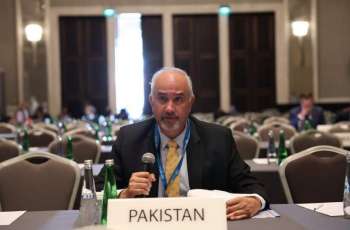WASHINGTON (Pakistan Point News / Sputnik - 27th July, 2021) Cooperation between museums in the United States and Russia will help both countries to improve bilateral relations, Executive Director of the Russian History Museum in the state of New York, Michael Perekrestov, told Sputnik.
"Despite the great challenges of arranging international loans in the time of the pandemic and at a time when the relationship between the US and Russia are not at the best, I am really pleased that we were able to overcome them and to work with our Russian colleagues," Perekrestov said.
The museum, located at the premises of the Russian Holy Trinity Orthodox monastery in the city of Jordanville, represents one of the largest and oldest collections of Russian historical and cultural artifacts in the United States.
Recently, the museum sent several dozens of artifacts to the museum in Tsarskoe Selo near St. Petersburg.
"We provided a loan of 50 objects from our collection to the museum in Tsarskoe Selo in Russia," he said.
Their exhibition opening on Friday is dedicated to the military escorts that accompanied Russian Tsars and Emperors from the 16th century, Perekrestov noted.
Perekrestov explained that the project is completely devoid of politics.
"Our mission is to share our collections with the broadest possible audience," he said.
Perekrestov also highlighted the importance of cooperation with Russian colleagues as both sides can only benefit from such collaboration.
"We also hope that our respective governments will repair their relationship. I think we have far more in common with each other than we have dividing us," he said.
Speaking of the loan to the museum in Tsarskoe Selo, Perekrestov - a US citizen of Russian descent - emphasized that some of the pieces are returning to Russia for the first time in 100 years.
"Perhaps, the most important one is the St. George Standard that was presented to the Black Sea Division, which was a sub-unit of the Imperial escort," he said.
The Standard was brought to the United States through other countries by the escort unit members after the 1917 revolution. In fact, it was in the Catherine Palace in Tsarskoe Selo along standards from other units, but several officers took it out of the palace after the revolution.
"There was an edict of the provisional government saying that all of the Tsarist symbols would be taken off. However, if you take a look at this Standard, there is so much Tsarist symbolism there, including the Imperial double-headed eagle with the crown, if you would move all of that then that would not be much left of the standard," Perekrestov said. "So, understandably, members of this unit went into the Catherine Palace and took this standard."
Other artifacts provided to the exhibition in Tsarskoe Selo include a military uniform, documents, a congratulatory address from Kuban Cossack Host that was present to the Emperor escort in 1961 when they were celebrating the unit's 150th anniversary.
"We were not able to provide some other objects because of their fragility, and we have provided scans," Perekrestov said.
Due to artifacts being in a fragile condition, the museum in Jordanville had to refrain from sending to Russia an original of a big photo album showing the story of everyday life of the members of the Imperial escort shortly after they moved to Serbia, he said.
"These people were working on mills, building roads, lining in barracks, and trying to maintain a sense of the unit in hope that they would soon go back to resume the fight against communism and to free their land from the Bolsheviks," Perekrestov added.
Perekrestov said every artifact from the collection has its own very interesting story, including how these objects left Russia and their journey over the course of decades.
"It is extraordinary to think that these items witnessed world wars and revolutions, a civil war and are now in our collection," he said.
Perekrestov explained the Imperial escort collection in Jordanville was formed from a two-part donation. In 1997, Nikolay Protopopov, the son of a member of the escort and leader of the unit's association, provided a large amount of items, while the other artifacts were donated by his widow, Nadezhda Protopopova, five years ago, he said.
"These people were trying to preserve this history," Perekrestov added.
The Russian History Museum officially opened in 1984, but some exhibits in the Holy Trinity monastery were organized in the 1960s and were mostly oriented to the Russian émigré community and individuals who visited the convent as pilgrims.



